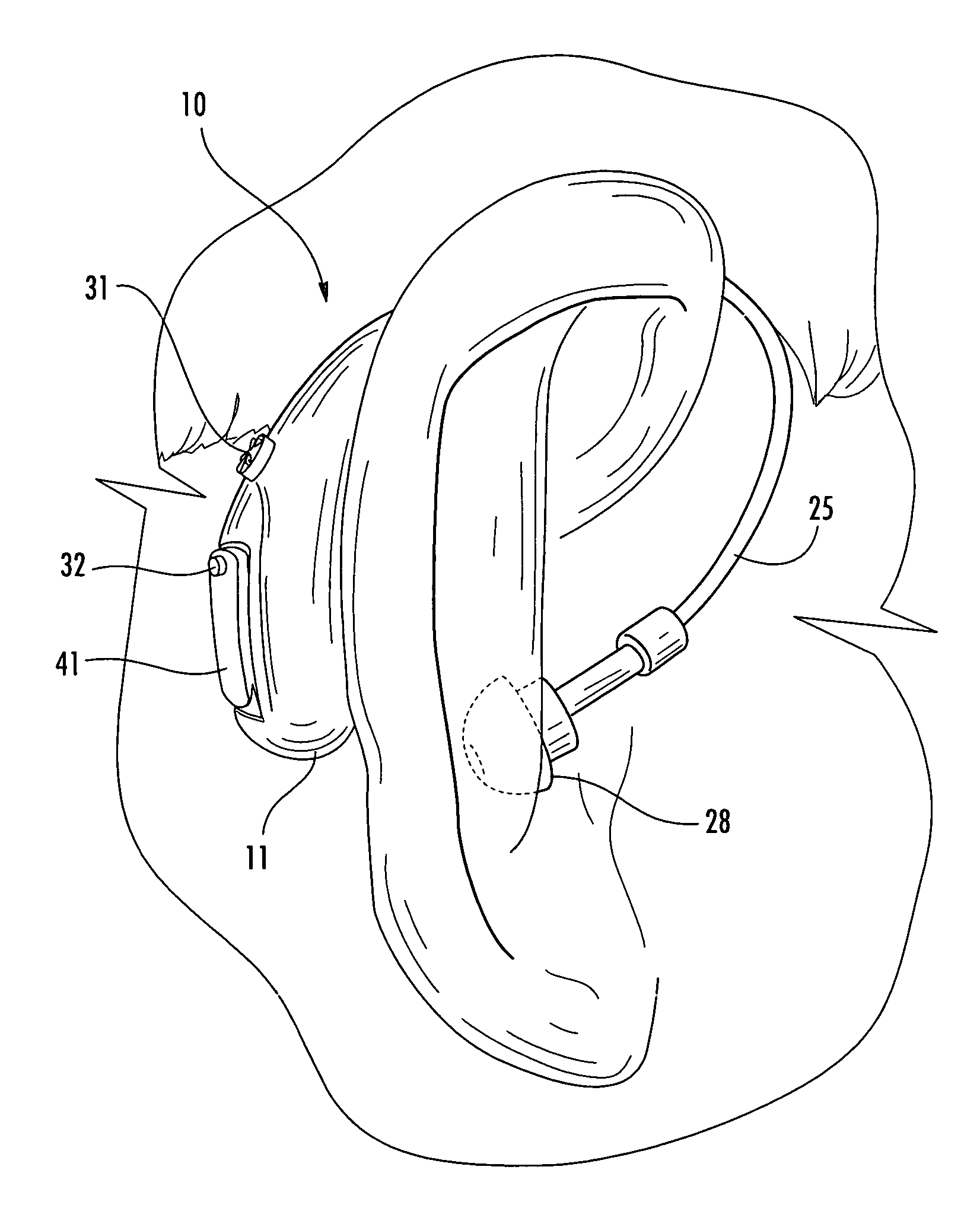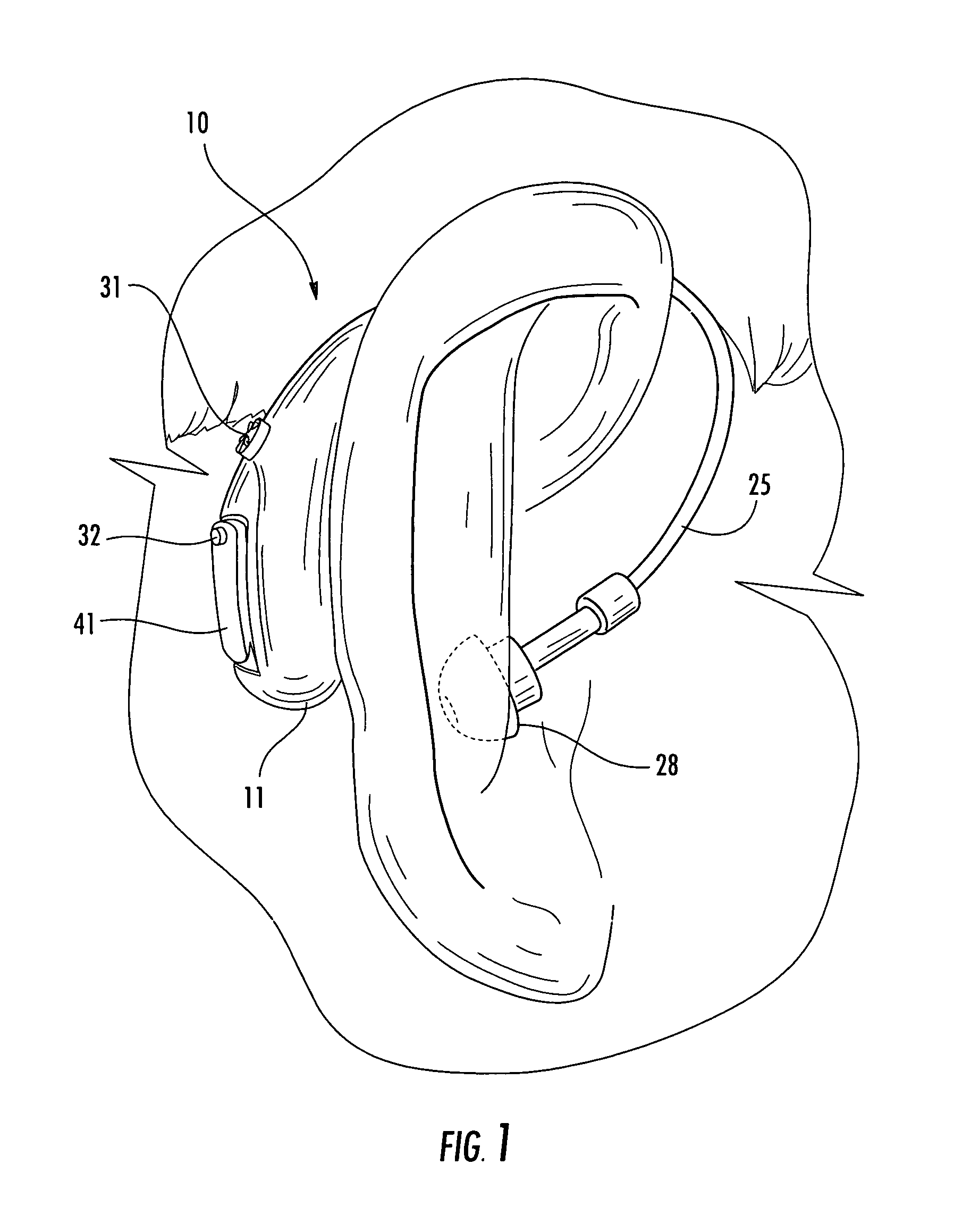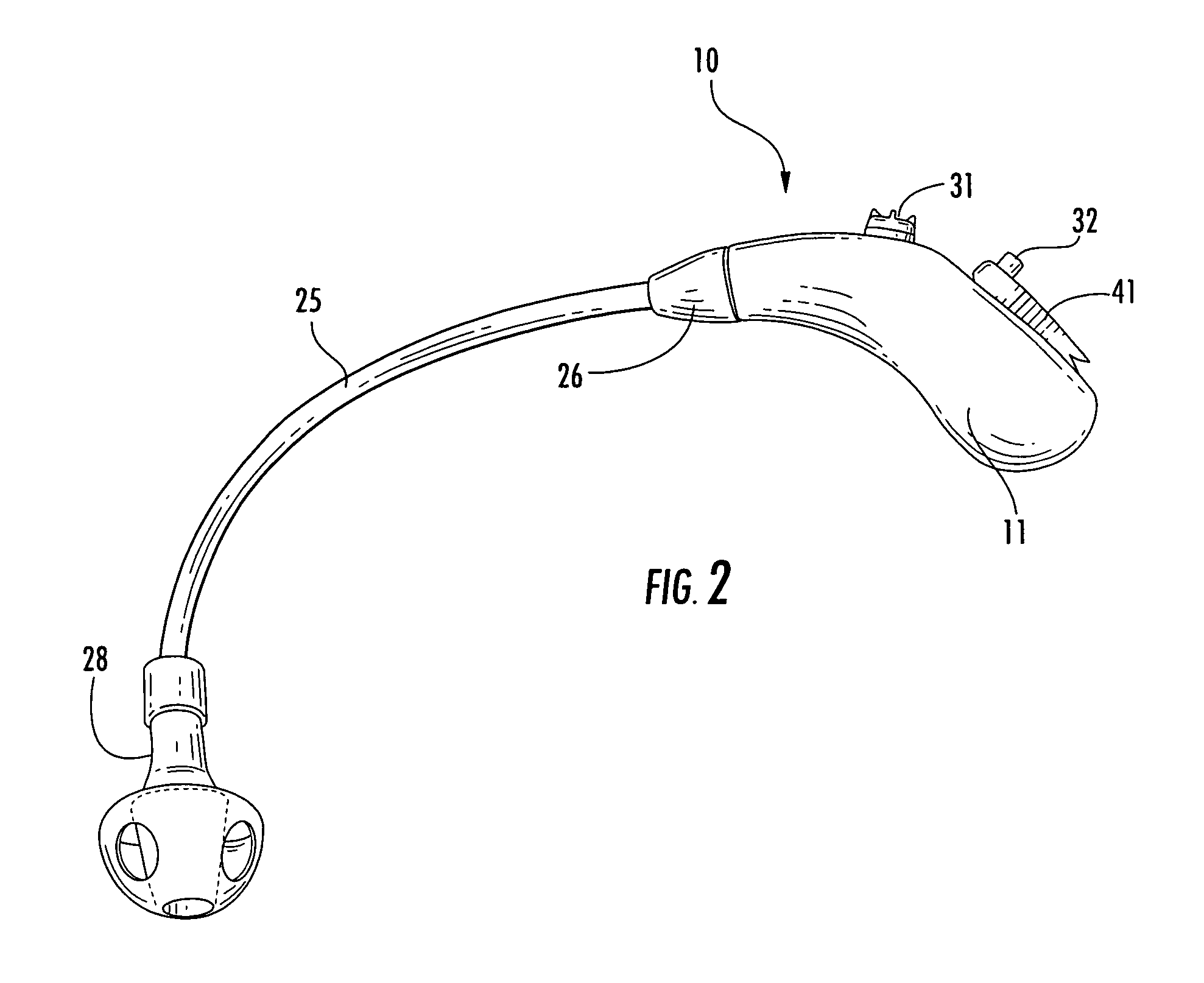Behind-the-ear hearing aid with integrally-molded instrument case
- Summary
- Abstract
- Description
- Claims
- Application Information
AI Technical Summary
Benefits of technology
Problems solved by technology
Method used
Image
Examples
Embodiment Construction
[0035] Referring now specifically to the drawings, a BTE hearing aid according to the present invention is illustrated in FIGS. 1 and 2, and shown generally at reference numeral 10. The hearing aid 10 comprises a sleek, ergonomic, integrally-molded instrument case 11 which is designed to reside behind an ear of the wearer.
[0036] As best shown in FIGS. 3 and 4, the instrument case 11 forms a substantially seamless electronics compartment 12. Conventional components including a microphone 14, loudspeaker 15, computer chip 16 and battery 17 are all housed in the electronics compartment 12. By inserting a programming strip (not shown) through slot 21 in the instrument case 11, the computer chip 16 is programmed to match a particular hearing loss with the most prescriptive amplification needed. The programming strip contacts a flex PCB interface 22.
[0037] Using known DSP technology, the hearing aid 10 converts a sound signal received at the microphone 14 into a digital format before pr...
PUM
 Login to View More
Login to View More Abstract
Description
Claims
Application Information
 Login to View More
Login to View More - R&D
- Intellectual Property
- Life Sciences
- Materials
- Tech Scout
- Unparalleled Data Quality
- Higher Quality Content
- 60% Fewer Hallucinations
Browse by: Latest US Patents, China's latest patents, Technical Efficacy Thesaurus, Application Domain, Technology Topic, Popular Technical Reports.
© 2025 PatSnap. All rights reserved.Legal|Privacy policy|Modern Slavery Act Transparency Statement|Sitemap|About US| Contact US: help@patsnap.com



